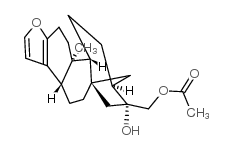The multifaceted mechanisms for coffee's anti-tumorigenic effect on liver.
Kai-Shan Tao, Wen Wang, Ling Wang, Da-Yong Cao, Yong-Qi Li, Sheng-Xi Wu, Ke-Feng Dou
文献索引:Med. Hypotheses 71 , 730-736, (2008)
全文:HTML全文
摘要
Epidemiological studies have found an inverse association between coffee consumption and the risk of liver cancer. Animal data support such a chemopreventive effect of coffee. Substantial research has been devoted to the identification of coffee components that may be responsible for these beneficial effects. Based on the current available literature, three major components, i.e. coffee diterpenes cafestol and kahweol (C+K), caffeine and chlorogenic acid contribute to the beneficial effects. These components induce phase II detoxifying and antioxidant enzymes as well as inhibit the expression or decrease the activity of phase I activating enzymes thus prevent carcinogenesis. These components target different stages of a common pathway, Kelch-like ECH-associated protein 1 (Keap1)--NF-E2-related factor-2 (Nrf2)--antioxidant-responsive-element (ARE) signal pathway thus alter the ARE-dependent expression of genes needed in the anti-tumorigenic effects.
相关化合物
| 结构式 | 名称/CAS号 | 分子式 | 全部文献 |
|---|---|---|---|
 |
乙酸咖啡醇
CAS:81760-48-7 |
C22H30O4 |
|
Effects of coffee and its chemopreventive components kahweol...
2008-04-01 [Food Chem. Toxicol. 46 , 1230-1238, (2008)] |
|
Protective effects of kahweol and cafestol against hydrogen ...
2007-09-10 [Toxicol. Lett. 173 , 80-87, (2007)] |
|
Inhibition of the fungal fatty acid synthase type I multienz...
2008-09-02 [Proc. Natl. Acad. Sci. U. S. A. 105 , 12803-8, (2008)] |
|
Cafestol, a coffee-specific diterpene, induces apoptosis in ...
2011-04-25 [Chem. Biol. Interact. 190 , 102-108, (2011)] |
|
Coffee and liver diseases.
2010-07-01 [Fitoterapia 81 , 297-305, (2010)] |